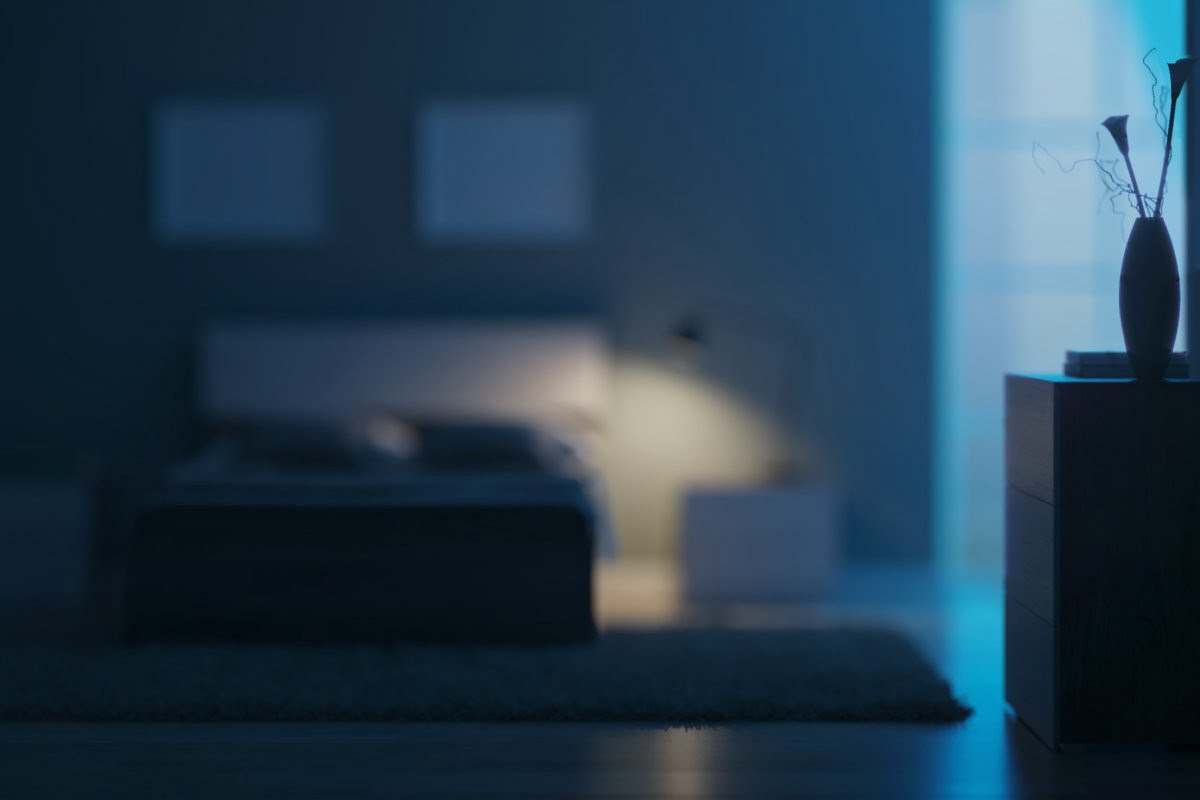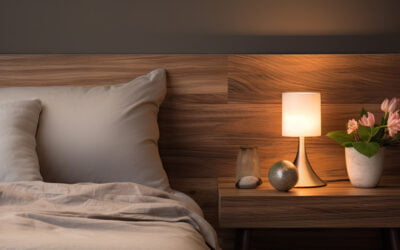Your bedroom environment is essential in helping you achieve quality and consistent sleep. To create the ideal bedroom environment, you should consider the following:
Light
Light and dark are strong cues in telling your body when it’s time to wake up or go to sleep. Light suppresses melatonin (the hormone that helps regulate the body’s circadian rhythm and helps you drift off), and in today’s age, we are exposed to more artificial light than ever before, which disrupts our circadian rhythms – keeping us alert and feeling less sleepy.
Investing in blackout curtains is a great way to block out early morning light – but artificial light can also interfere with your circadian rhythms. Make the bedroom a tv and gadget-free zone!
Read more tips on how to reduce light in the bedroom.
Noise
Unsurprisingly, a quieter bedroom is more conducive to sleep than a noisy one.
Noise tends to be most disruptive in the lighter stages of sleep, when we are dropping off or at certain stages of our sleep cycle. But even if we are not fully conscious to be aware of it, noise that disturbs our deepest sleep can be the most damaging to our physical and mental health.
If you are unable to block external noises with double glazing or other factors that are outside of your control, ‘white noise’ and soft, steady sounds can be soothing.
Temperature
Whilst children and elderly people may require a warmer environment, the ideal bedroom temperature is around 16-18 degrees Celsius. This might sound cool, but our body temperature naturally drops to its lowest level about two hours after we fall asleep.
Clutter
A cluttered bedroom can affect you more than you might think. A study, conducted by New York’s St. Lawrence University, revealed that a messy bedroom can lead to a poor night’s sleep and increased anxiety. The bedroom should be a place of relaxation – and not your office, gym or playroom.
Bedroom Décor
When decorating your bedroom choose wall colours that set the tone and mood for the entire space. You want to elicit warmth and calm but ultimately make it inviting for you. Colour has no effect on how well you sleep but it does affect how you feel about the bedroom space – so choose colours that make you feel calm.
Certain scents can also help you achieve a calm environment, particularly if used as part of a routine. Your brain will eventually associate a scent with bedtime.
Beds and Pillows
Many people make the link that lack of sleep affects how they feel the next day but many fail to recognise that their sleep could be improved by a new mattress. A bed with the correct support, comfort and space will ensure you wake less, move about less, are less disturbed by your partner and are less likely to wake up feeling tired or aching.
Quite often a mattress has worn out long before you realise. That’s why we recommend replacing your mattress every seven years.
Similarly, because pillows affect your sleeping posture and lie next to your skin and your nostrils, it is a good idea to invest in quality pillows and replace them at least every two or three years for a healthy sleeping environment. Read more about our pillow advice.






0 Comments